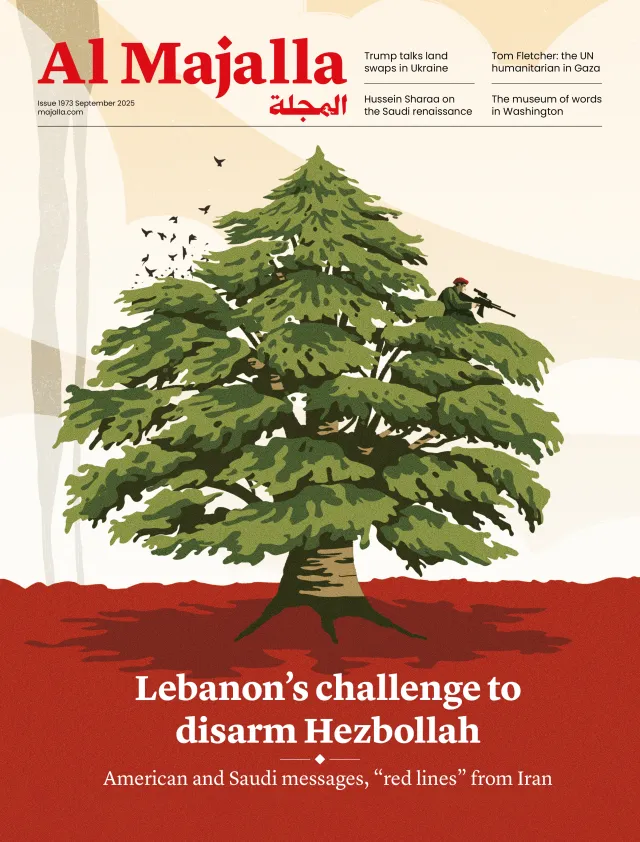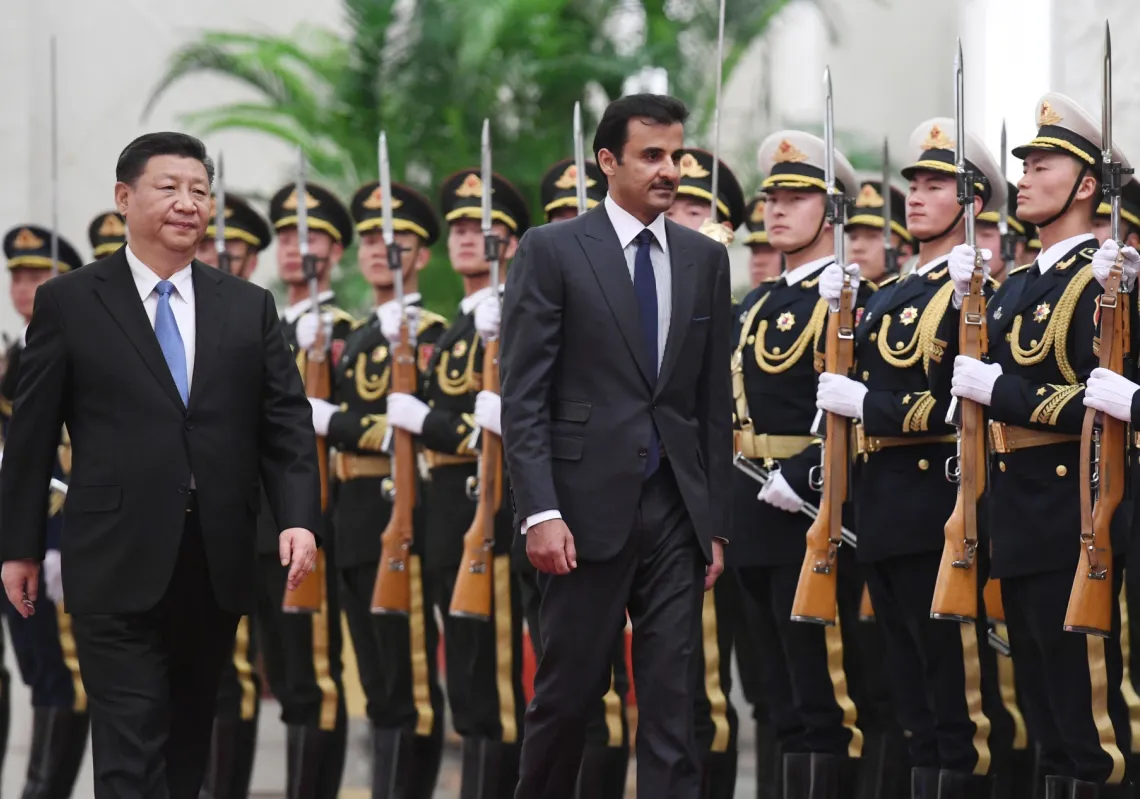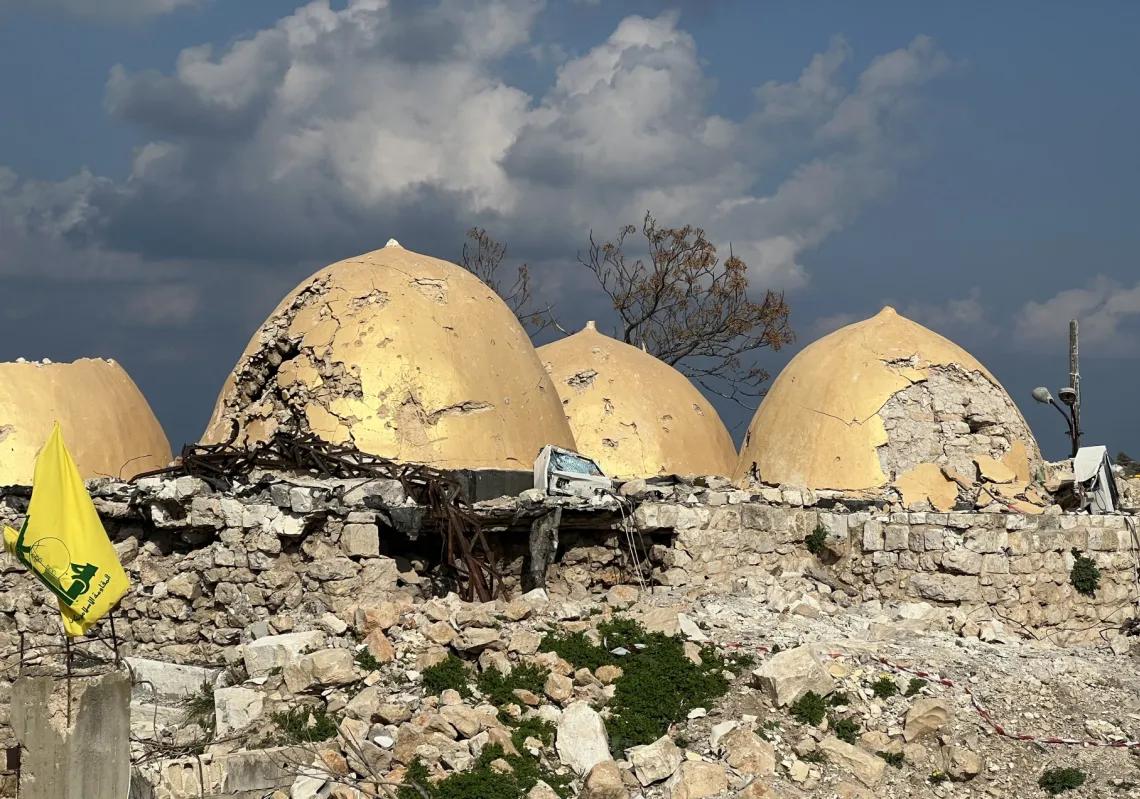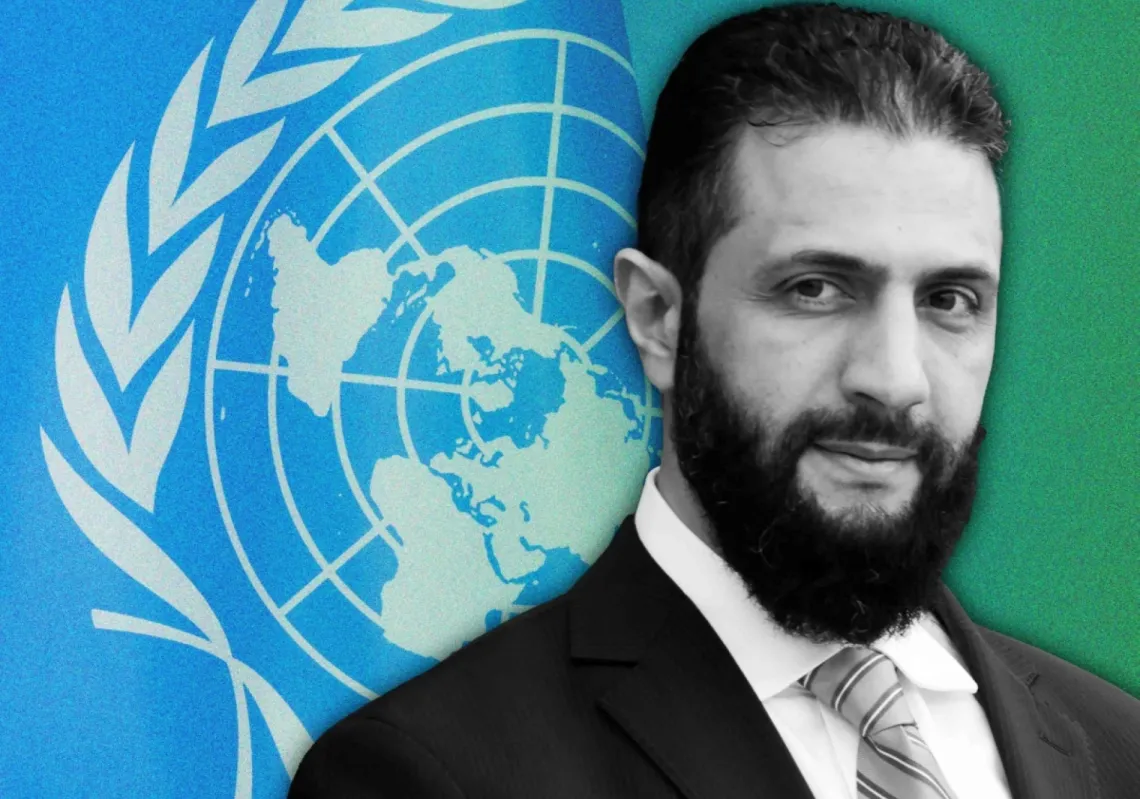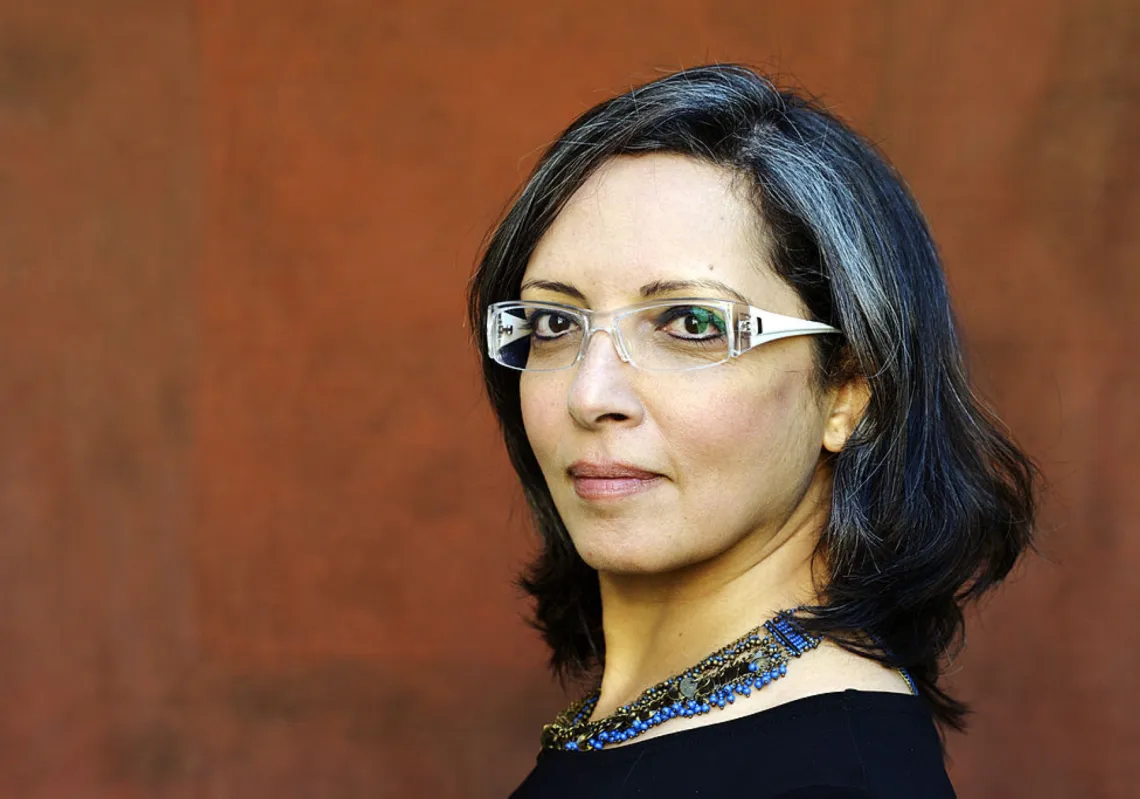 The commander of the Iranian Revolutionary Guard's Quds Force, General Qassem Suleimani, attends celebrations marking the 37th anniversary of the Islamic revolution on February 11, 2016 in Tehran. Iranians waved "Death to America" banners and took selfies with a ballistic missile as they marked 37 years since the Islamic revolution, weeks after Iran finalised a nuclear deal with world powers./ AFP / STR (Photo credit should read STR/AFP/Getty Images)[/caption]
The commander of the Iranian Revolutionary Guard's Quds Force, General Qassem Suleimani, attends celebrations marking the 37th anniversary of the Islamic revolution on February 11, 2016 in Tehran. Iranians waved "Death to America" banners and took selfies with a ballistic missile as they marked 37 years since the Islamic revolution, weeks after Iran finalised a nuclear deal with world powers./ AFP / STR (Photo credit should read STR/AFP/Getty Images)[/caption]
By Amir Toumaj*
A retired Islamic Revolutionary Guard Corps (IRGC) commander who was deployed to Syria gave a lengthy interview to a hardline media outlet last week about IRGC operations in the country. Serving with the Afghan Fatemiyoun Division, Brigadier General Mohammad Ali Falaki highly praised the militia. The commander describes the array of IRGC-backed forces fighting in Syria and the Middle East as a unified army – apparently with the ultimate goal of destroying Israel.
The interview with General Falaki is a window into IRGC propaganda. The Iranian public is the primary audience, though the message is also directed towards the outside world. The interviewer recommends the commander’s discussion to “those who want to see the bravery of the Fatemiyoun … from a different angle.” The interview, in other words, introduces itself as a response to the negative perceptions about Afghans forcibly recruited into the militias, and delves into the broader wars of the Middle East.
A veteran of the Iran-Iraq War, Falaki rose through the ranks to command a mechanized brigade of an infantry division. Following the war, he retired and has been involved in various “cultural” activities, including a veterans group.
Falaki lamented about the insufficient support in Iran for Afghan refugees, which he views as an untapped pool of recruits. There are approximately three million Afghan refugees in Iran – a majority of them are Shia Hazaras – and discrimination against them is well documented.
“We go to south Lebanon and support the Shias over there,” Falaki said, and “spend so much money” supporting Shias elsewhere. “We in Iran have sometimes looked at them [Afghans] as drug-dealing criminals, trouble-makers, or construction workers,” he added.
Afghan nationals have participated in the Syrian war as early as 2012. According to interviews with commanders, the first wave from Iran were 25, most of whom were veterans who had fought under the IRGC during the Iran-Iraq War against Saddam, as part of the Abouzar Brigade, and against the Soviets and the Taliban, as part of the Mohammad Corps. The latter dissolved following the U.S. invasion of Afghanistan in 2001, and its members fled to Iran. These experienced fighters later formed the senior leadership of the Fatemiyoun. None from the first generation of the Fatemiyoun leadership has survived, according to the militia.
Prior to forming a distinct unit in Syria, Shia Afghans fought as auxiliaries of Iraqi militias. The revelations of commanders validate analysis of fatality announcements up to the formation of the Fatemiyoun in late 2013: killed Afghans were named as members of the Iraqi contingent in Syria, the Liwa Abu Fadl al Abbas.
As the ranks swelled, the IRGC Qods Force helped establish, organize, train, and finance a separate Shia Afghan unit. The Fatemiyoun is named after the daughter of Prophet Muhammad, Fatima. Most combatants have been recruited from the diaspora in Iran, and some from Afghanistan and the small diaspora in Syria. An unnamed Fatemiyoun source reportedly told Iranian media last year that the militia was upgraded from a brigade to a division, which is supposed to number more than 10,000 forces.
Falaki claims that the Fatemiyoun has “several brigades,” and that they include some “Sunni brothers.” According to slain Fatemiyoun commander Mohammad Hassan Hosseini (AKA Seyyed Hakim), the militia consists anywhere between 12,000 – 14,000 fighters. Iranian media claim more than 20,000 fight under the Fatemiyoun banner. Analysts and investigators, however, consider these figures to be exaggerations, with the actual number possibly in the several thousands. A former Fatemiyoun combatant told Human Rights Watch that 3,000 – 4,000 fighters are active in Syria.
[caption id="attachment_55252343" align="aligncenter" width="1000"]
 Brigadier General Mohammad Ali Falaki, one of Islamic Revolutionary Guard Corps (IRGC) leaders[/caption]
Brigadier General Mohammad Ali Falaki, one of Islamic Revolutionary Guard Corps (IRGC) leaders[/caption]
Falaki denied the “allegation by enemies” that Afghan fighters are mercenaries and guns for hire. “They fight in Syria due to their commitment to Islam, not because of ethnicity … but of their commitment to Shiism,” he claimed.
“Their blood has proven to us that there are 3 million Afghans in this land, and we must have a positive view towards them,” Falaki stated. The accounts of surviving members of the Fatemiyoun and eye-witnesses consistently indicate that Afghan fighters are considered expendable.
Falaki claims that the Afghans are paid $100 per month to fight. Fatemiyoun combatants themselves, however, contradict this. Afghans fighters told the The Wall Street Journal in 2014 that their salaries were $500 per month. The former senior commander Seyyed Hakim told an Iranian outlet prior to his death that Afghan combatants receive $450 per month. Afghan residents of Iran have told The Los Angeles Times in 2016 that some fighters receive up to $800 per month. Recruits from Afghanistan are offered residency permits in Iran and $500 monthly salary, according to The Guardian, who spoke with a mujiddleman. The IRGC downplays high payments to foreign fighters because the Iranian economy and ordinary Iranians are struggling.
Falaki cites the example of recruiting from minorities during the Iran-Iraq War to strengthen the case for recruiting Afghan refugees.
“During the [Iran-Iraq] War, we were responsible for transforming all ethnicities … and all tribes into combat divisions,” he said. “We never dared to say how many Sunni brothers or how many Afghan brothers have been in this war,” he said, attempting to project an ecumenical outlook of the IRGC. During this period, the IRGC also successfully developed its proxy model abroad in Lebanon: Hezbollah.
Falaki alludes to the experience of recruiting Iranian minorities in the IRGC in the war against Iraq. Resonating with the IRGC’s egalitarian identity, this is a fundamental component of its efforts to expand. The IRGC’s strategy includes recruiting regime loyalists from the local population, and exploiting and perpetuating rifts within communities.
While discussing Afghan recruitment, Falaki interestingly lamented that not many clerics are joining the fight.
“We found Seyyed Hassan Nasrallah in Lebanon, while among all of these revolutionary and active clerics, we have not known a single leader in the field of combat, and we have not organized this massive force,” he noted. Although a handful of Iranian clerics have been killed in Syria, Afghan clerics do not appear to have joined the struggle. Falaki calls for a parallel to Hezbollah’s leader in the Fatemiyoun, serving as the militia’s political, spiritual, and military leader and pledging allegiance to Supreme Leader Ali Khamenei and velayat-e faghih (guardianship of the jurisprudence). Falaki’s statement may also indicate lingering resentment with lack of more clerical class participation in war. The IRGC was established to protect clerical rule, fundamentally that of the supreme leader. The generation of the Guard including Falaki who fought in the long and devastating Iran-Iraq War returned home to find rich and powerful clerics, while the Guard suffered the horrors of a brutal war.
“Shia liberation army”
The commander claimed that the establishment of the Fatemiyoun facilitated “the formation of a Shia liberation army whose commander is Hajj Qassem Soleimani,” the leader of IRGC’s Qods Force. He proclaimed that the IRGC veterans are creating “unity among ethnicities” and “unity among nations.” According to Falaki, the Fatemiyoun “obey the Leader of the Revolution [Supreme Leader Ali Khamenei].” Indeed, the IRGC and its proxies form a global jihadi network that answers to Tehran.
The commander outlines the array of forces fighting under the Guard’s flag in Syria: the Zeynabiyoun Brigade, a Pakistani militia, and the “Heydarioun brothers who are Iraqi brothers.”
IRGC commanders and Iranian media has given the name “Heydarioun Brigade” to the Iraqi militias in Syria on a more regular basis since roughly 2015. The Iraqi contingent in Syria has called itself Liwa Abu Fadl al Abbas, and was a formidable combat force between 2012 and 2014. Following the incursion of the ISIS into Iraq in mid-2014, most of the units were called home. IRGC-backed Iraqi militias are still active in Syria, however. The Badr Organization and Harakat al Nujaba have notably participated in recent IRGC-led operations in Aleppo.
Falaki also restated the goal for the destruction of Israel. “Forming the first nucleus of the liberation army has the objective that, God willing, we will not have anything called Israel in 23 years,” he stated. Supreme Leader Khamenei claimed in 2015 that Israel would not exist in 25 years. Falaki boasted that Iranian-led units are already by Israel’s border and that “the Fatemiyoun brothers have established the basis for this fight.”
“Iranian forces are not meant to comprise all of this [international] army,” Falaki said. The IRGC’s emphasis on building local forces creates an organic base of support and helps to spread the revolution in Arab and Muslim lands. The IRGC hopes to project an image of supporting locals, though its recruitment has a distinctly Shia identity. Perpetuating sectarianism and violence serves to bolster the IRGC’s image as a protector of Shias. A foreign legion engaged in several wars abroad, furthermore, elicits less opposition and complaints within Iran, reducing the impact of fatalities and casualties on Iranian society.
Discussing Iran’s military commitments, Falaki noted that Iran’s proxies are fighting on three major fronts: Syria, Iraq, and Yemen.
“One front of this army is in Syria, the other in Iraq, and another in Yemen,” he stated.
The first two are well known, though the claim about Yemen reflects the IRGC’s ultimate goal more than facts on the ground. The Houthis are known to be militarily and politically supported by the IRGC, though the Guard may not exercise full control over the Houthis. The IRGC’s objective is to use the Houthis as a foothold in the Arabian Peninsula, on Saudi Arabia’s southern border. The suspicion of the Houthis being a full Iranian proxy is precisely the reason the Saudis and allies have launched a war in Yemen.
The Houthis, however, are not IRGC proxies like the Fatemiyoun and Iraqi militias. Houthi leaders have publicly complained about IRGC claims of full support. A senior Houthi official in March lashed out at a senior IRGC commander who claimed that the Guard would support the Houthis anyway it could, criticizing Tehran for “exploiting” the Yemeni file.
The Houthis exercise some measure of independence, and do not presently appear to be inclined to serve as the IRGC’s proxy in a perpetual fight against Saudi Arabia, as noted by Yemen scholars.
What is clear is the IRGC’s strategy to exploit the war in Yemen, primarily to be a thorn in Saudi Arabia’s side. They want to perpetuate the perception that Houthis are full Iranian proxies to elicit harsher Saudi reactions. The IRGC hopes that the continuation of conflict will leave the Houthis no choice but to fight and fully embrace the IRGC in order to survive.
Falaki’s deployment to Syria, and IRGC’s pattern of deployment
When the then-ISIS shocked the world by sweeping through Iraq in June 2014, Falaki and a group of 50 retired, experienced IRGC commanders (the lowest rank of which was battalion commander) volunteered to join the war effort as advisers. He said they wanted to see how they could be “effective.” Falaki went to the airport, but his flight on that day and for the next several days was cancelled. The commander said that a decision came from the top to delay the deployment. This reflects the chaos and uncertainty about on-the-ground developments immediately following ISIS’s expansion into Iraq. Iranian government officials and commanders were indeed scrambling to respond to ISIS’s rapid gains, who soon threatened the gates of Baghdad and advanced closer to Iran’s borders.
According to Falaki, the request came for the group of former IRGC commanders to deploy to Iraq to retake the Mosul dam towards the end of Ramadan in late July 2014. While Falaki declined because “the work was hasty,” Iraqi forces, IRGC-backed militias, Kurdish Peshmerga, and the US Air Force launched the operation to retake the dam in early August, claiming it by Aug. 19. A source close to the US special operations community has said that Qods Force operatives were on the ground during the operation.
Falaki waited until mid-2015, when the volume of Iranian forces increased to launch a major offensive in Aleppo province in coordination with Russia’s military intervention in September 2015. Under “Operation Muharram” (as it coincided with the holy Shia month of Muharram), thousands of regular IRGC ground forces and Guard-backed militias participated in a pro-regime offensive in southern Aleppo and captured the major areas of Khan Touman, Afrain, and al Hadher.
[caption id="attachment_55252342" align="aligncenter" width="1024"]
 KABUL, AFGHANISTAN -OCTOBER 24: Shi'ite Muslims flagellate themselves in Kabul, Afghanistan on October 24, 2015 during the mourning ceremony held within Muharram month, known as the first month of the Islamic calendar and in which Shiite Muslims hold ceremonies to observe Ashura Day, the 10th day of Muharram, marking the commemoration of the martyrdom of Prophet Mohammad's grandson Husayn ibn Ali and his companies, killed in 680 AD in the battle of Karbala. (Photo by Mustafa Bag/Anadolu Agency/Getty Images)[/caption]
KABUL, AFGHANISTAN -OCTOBER 24: Shi'ite Muslims flagellate themselves in Kabul, Afghanistan on October 24, 2015 during the mourning ceremony held within Muharram month, known as the first month of the Islamic calendar and in which Shiite Muslims hold ceremonies to observe Ashura Day, the 10th day of Muharram, marking the commemoration of the martyrdom of Prophet Mohammad's grandson Husayn ibn Ali and his companies, killed in 680 AD in the battle of Karbala. (Photo by Mustafa Bag/Anadolu Agency/Getty Images)[/caption]
By mid-2015, Bashar al Assad was in danger of collapse following a string of rebel successes. The Syrian army was exhausted and depleted of manpower. Iran had overstretched its proxies and had no choice but to deploy its ground forces to save Assad. It also needed additional firepower. Iranian and Russian leaders held secret, high-level meetings from the beginning of 2015 to plan the intervention. Following the July nuclear deal, Qassem Soleimani reportedly traveled to Moscow to personally ink the deal. The Kremlin agreed, exploiting an opportunity to establish a foothold in the Middle East, become a power broker, and expand its strategic arc of influence, providing it with the potential to disrupt America’s freedom of action. Tehran and Moscow succeeded in reversing the rebel momentum – eliminating Assad’s overthrow by military means.
The pro-Assad regime campaign significantly weakened the opposition in southern Aleppo but was not decisive, and the offensive stalled by December 2015. IRGC fatalities had skyrocketed, including more than 100 Guardsmen, a majority of them officers including Brigadier General Hossein Hamedani, the commander of operations in Syria. The IRGC drew down its forces in December, which was interpreted by some Western officials as retreat from Syria. The IRGC, however, was not done fighting.
Falaki claims that the offensive in southern Aleppo facilitated preparations to take northern Aleppo. This suggests that the IRGC may have considered and planned to cut off the opposition’s major supply route to Turkey in the fall. Capturing the rebel-held area of eastern Aleppo while this supply route was still open would have been extremely costly and difficult, with a high chance of failure. The IRGC and its allies thus launched a fresh offensive in northern Aleppo in February 2016.
The Guard again deployed a significant number of its ground forces during that offensive. They continued deploying contingents of ground forces at least through May. That month at Khan Touman in southwest Aleppo, the jihadist-led Jaish al Fatah coalition ambushed and seized the village from the IRGC and Shia forces, killing more than a dozen Guard troops and tens of Shia militiamen. Many of the fatalities were from a ground forces unit stationed in northern Iran. The defeat was widely publicized in Iranian media. The Guard vowed revenge.
The IRGC’s deployment of significant numbers of ground forces between October and May suggested broader transformation of the Guard into an expeditionary force. Since that defeat, however, the IRGC has not deployed its regular ground forces in large numbers.
In the successful encirclement of Aleppo in late July, senior IRGC officers were killed, alongside large numbers of Afghans and Pakistanis. After the opposition broke the siege of Aleppo in August, the IRGC reportedly deployed trained Hezbollah and Iraqi militias to bolster the pro-regime front there.
The Guard relies on its preferred model: Guard officers leading operations and proxies serving as the boots on the ground.
“We are looking for boys who can train, organize, and … to go to Syria,” Falaki said, adding that this is an order from highest national security decision-makers in Tehran. Training and organizing local forces can render unnecessary the deployment of large numbers of regular Iranian forces, who may lack the experience and training to succeed against some of the battle-hardened opposition groups.
Indeed, Falaki underscores the Guard’s role in training and strengthening Syrian forces, which had made it “unnecessary for us to take an army over there.” The chief IRGC commander Mohammad Ali Jafari has claimed that the Guard has trained 100,000 Syrian National Defense Forces that act as auxiliaries to the Syrian Arab Army, which is still hemorrhaging manpower. Independent sources also estimate the NDF at this number. Falaki claims that “we may be able to destroy the enemies’ occupation in Syria after sometime, just as we did in a year or two in Kurdistan,” but that “controlling the influence of the enemies is at their [locals] hands, and we cannot eliminate this influence.” The IRGC knows full well the quagmire and difficulties of insurgencies facing a foreign army. The Guard, after all, has been at the forefront of assisting and bolstering insurgents, such as in Lebanon and Iraq. The Syrian conflict has flipped the script.
Brigadier General Falaki’s statements may suggest that perhaps some in the senior Guard officer corps were considering large-scale deployment to Syria, though developments on the ground and similar statements by top IRGC commanders indicate the IRGC’s aversion to larger scale deployment and emphasis on developing local forces. The IRGC, however, has not hesitated to deploy ground forces to Syria if the situation demanded it, as they did between October 2015 and at least through May 2016. The Syrian Civil War is as an “existential” matter for senior commanders and policy-makers in Tehran, threatening the “Axis of Resistance” alliance compromised by the Islamic Republic and its allies.
Developing the foreign militias serves the IRGC’s long-term interests and can act as a “Shia liberation army,” extending the Guard’s arms into the region. These forces could return to their home countries and act as Iranian assets there. Although Falaki could exaggerate the existing capabilities as part of propaganda, the IRGC is honing this capability in Syria and Iraq and aspires to develop a capable foreign legion. The war in Syria will certainly be the crucible for the IRGC’s mission to export the revolution and expand its influence in the Middle East.
*Amir Toumaj is a research analyst at the Foundation for Defense of Democracies specializing in Iranian affairs. His research focuses on the nexus between Iranian economic and security policy-making, the Islamic Revolutionary Guard Corps, domestic politics, nuclear non-proliferation, and Tehran’s policies across the Middle East.

